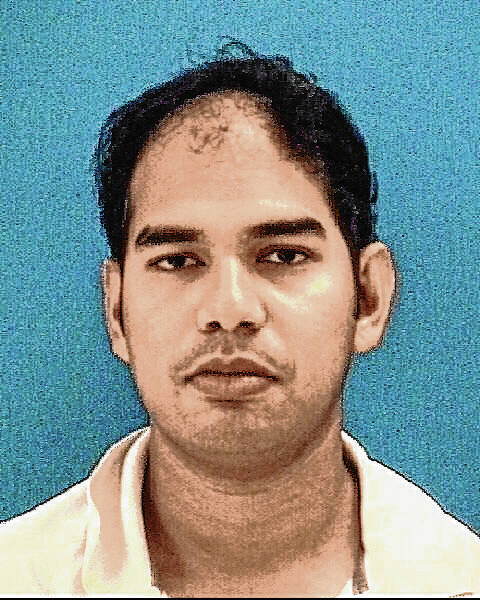An engineer from India could face up to 18 years in prison, as well as fines of up to $20,000, after being found guilty by a jury in the hit-and-run death of a Columbus East High School student.
A Bartholomew Circuit Court jury found Shiam Sunder Shankara Subramanian, 26, Columbus, guilty on two felony counts involving the hit-and-run death of 16-year-old Lilly J. Streeval on Aug. 30, 2021.
At the end of final statements, as well as a closed-door attorney conference requested by Judge Kelly Benjamin, the seven men and five women jury began deliberations at 1 p.m. Thursday. They returned with guilty verdicts on the two felonies at about 8:30 p.m. Thursday. Sentencing is set for 1:30 p.m. on Oct. 27.
The jury found Subramanian guilty of leaving the scene of an accident resulting in death or catastrophic injury, a Level 4 felony, as well as passing a school bus while the arm signal is extended causing death, a Level 5 felony.
Prosecutors said the victim was hit by Subramanian’s 2019 Honda Civic, thrown against the side of the bus she was attempting to board and was found 9 feet from the point of impact on South Gladstone Avenue.
Columbus Police officer Jason Driver said bus driver Robert Joy, 84, was in shock immediately following the fatality. Defense attorneys James Voyles and Jennifer Lukemeyer brought up statements made by Joy at that time, such as that he worried he may have unknowingly caused the accident, in what seemed to be an effort to create reasonable doubt in the state’s case.
The defense team also argued that Subramanian was also not thinking clearly. As Lukemeyer put it, Subramanian’s questionable actions were the result of “trying to get his head wrapped around what happened.”
Lukemeyer described the death of Lily Streeval as “a tragedy on a normal day of an unforgettable and unavoidable accident, but not a criminal act.”
The defense team suggested that while their client did see the flashing red lights, overcast skies during the 6:55 a.m. fatality made it so dark that Subramanian didn’t realize he was passing a school bus.
Voyles and Lukemeyer insisted a security video taken from a nearby home provided proof that one of the arm signals was not fully extended when the teen was hit. They told the jurors it takes 4.7 seconds after a school bus comes to a halt before the stop arms are fully-extended.
But Deputy Prosecutor Kimberly Sexton-Yeager says Joy was driving a new model bus that extends the arm signals automatically the moment red warning lights come on. Subramanian had told investigators that he saw the flashing red lights as he was approaching the bus.
Accident reconstructionist Roger Barrett of Northwestern University, who was hired by the defense, was the only witness called to the stand by Voyles and Lukemeyer.
Benjamin placed Subramanian under oath to receive assurances it was his decision not to testify on his own behalf.
Although Voyles said the defendant thought he had hit a deer or a similar object, Sexton-Yeager said the teenage girl should have been clearly visible to Subramanian as she walked down her driveway to catch the bus.
Contending that he was unaware he had struck a person, Lukemeyer said the defendant paused for a moment before continuing to drive on “because his first impulse was to go home to report the incident.”
But video shown to the jurors didn’t seem to support that claim. Instead, it showed Subramanian’s windshield completely covered with web-shaped cracks blocking his view, except for one small hole in the glass.
Two witnesses in their own vehicles – Brian Rea and Bryan Johnson – testified Subramanian did not stop at all after hitting the teen, Sexton-Yeager said.
Rea testified he followed Subramanian for nearly four miles at speeds of up to 80 miles per hour, although Lukemeyer described that speed as an estimate or guess on the witness’ part.
Subramanian attempted to turn around when he reached the yard of Officer James Scott on County Road 250E, but when Rea arrived followed by police, he cooperated completely with authorities, Lukemeyer said.
But prosecutors pointed out the defendant did not use Scott’s driveway. Instead, the Honda ended up stuck in the yard, with the car’s wheels continuously spinning until police arrived, deputy prosecutor Matt Taylor said.
“He was caught,” Taylor told the jury. “He fled until he could flee no more. That’s when he decided to become cooperative.”
As she addressed the jury, Sexton-Yeager said the defense seemed to be promoting a false argument.
“There is no excuse or exception that states you don’t have to stop after a crash if you don’t know what you hit,” she told the jury. “You stop because it’s the law. You stop because it’s the right thing to do.”
Earlier, she reminded the jurors it’s also Indiana law that when you see a school bus is stopping, all approaching vehicles from both directions should slow down and eventually come to a halt before reaching the bus.
Subramanian, who was working in Bartholomew County on a work visa, surrendered his passport when formal charges were filed against him on Sept. 2, 2021.
While he was allowed to post a $500,000 cash bond prior to the trial, Judge Benjamin ordered that Subramanian be held in the Bartholomew County Jail until sentencing.





